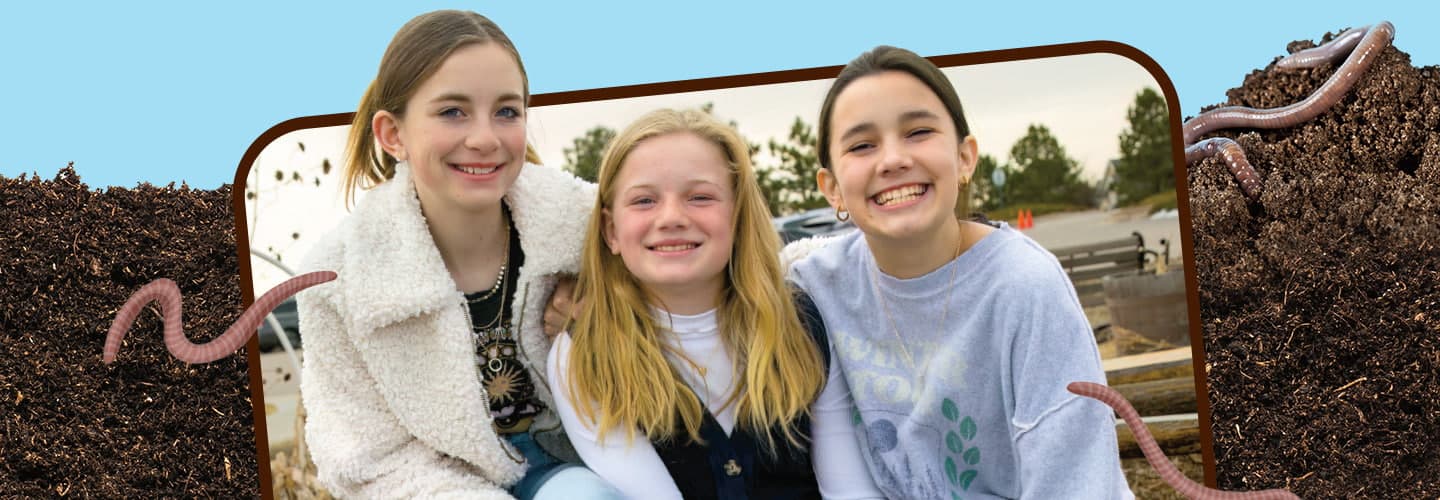It happened every day in the cafeteria at Prairie Winds Elementary School. Students would throw away an enormous amount of food. Handfuls of carrot sticks, half-eaten apples, bowls of salad, and other food ended up in the trash.
“We noticed how much wasted food there was,” says 12-year-old Annabel Montero. “It was just going into the dumpster.”
Last year, Annabel and her friends Amelia Ashby and Sloan Clary decided to do something about all that discarded food. The three friends started a composting program at their school in Monument, Colorado. When composted food decomposes, or breaks down, it can be used as a natural fertilizer that helps crops grow.
Along the way, the girls, who call themselves the Three Composteers, taught their classmates about the rotten ways that food waste affects the planet.

